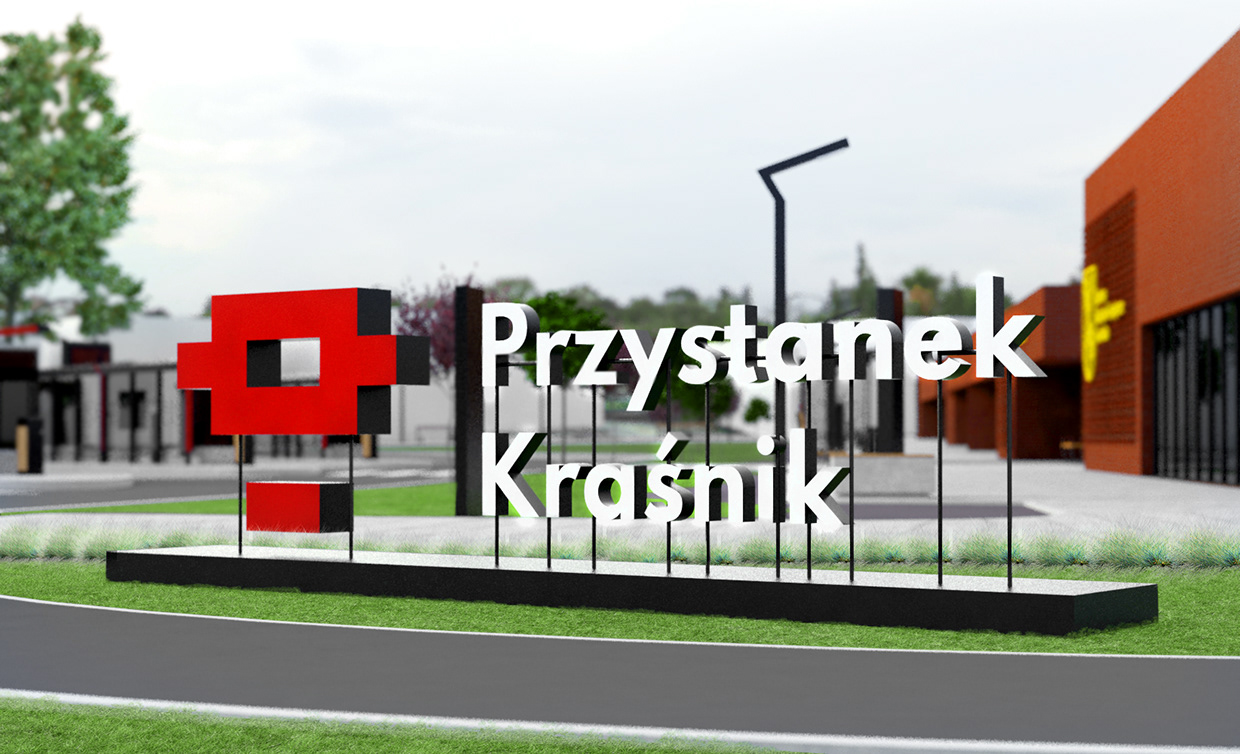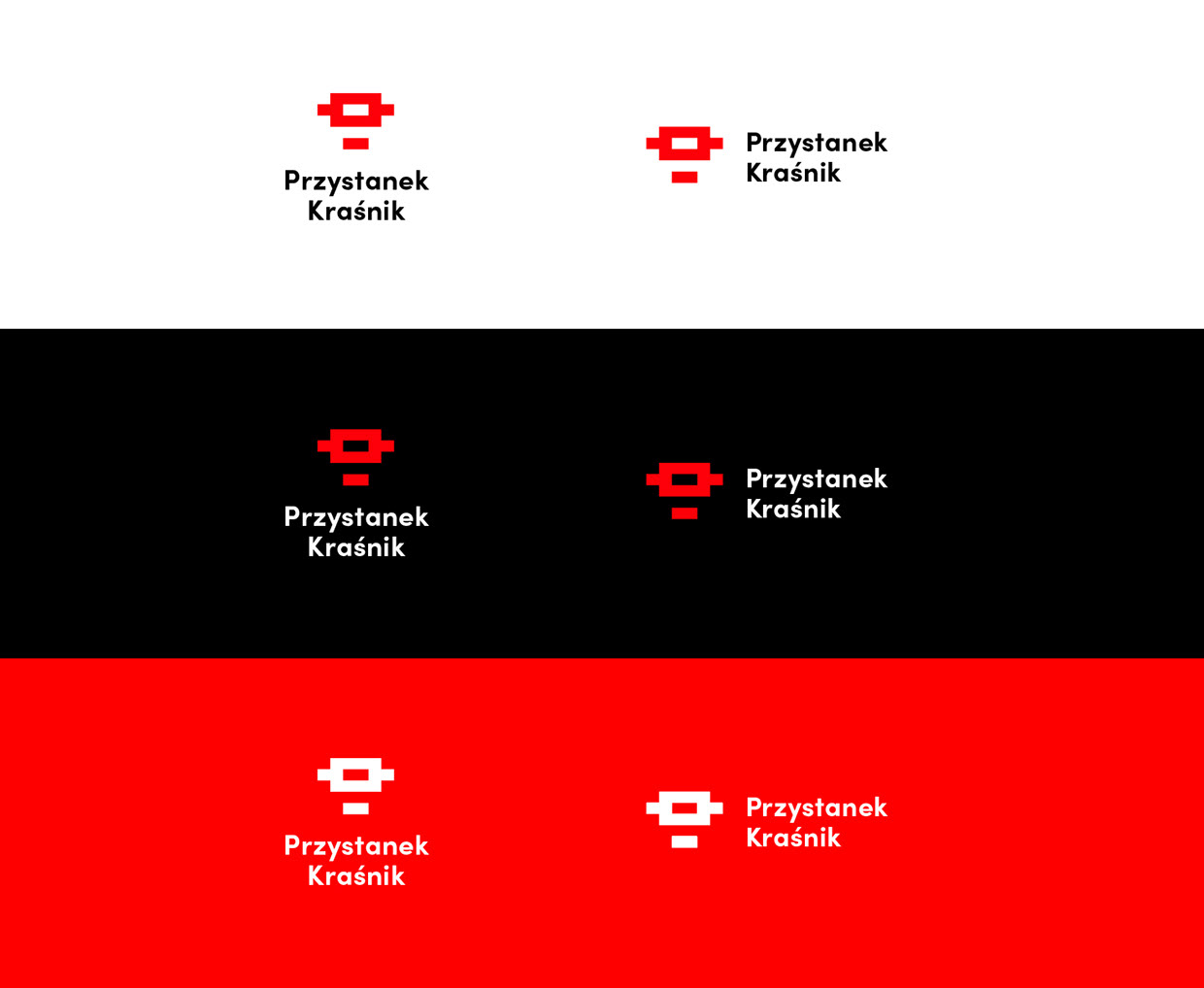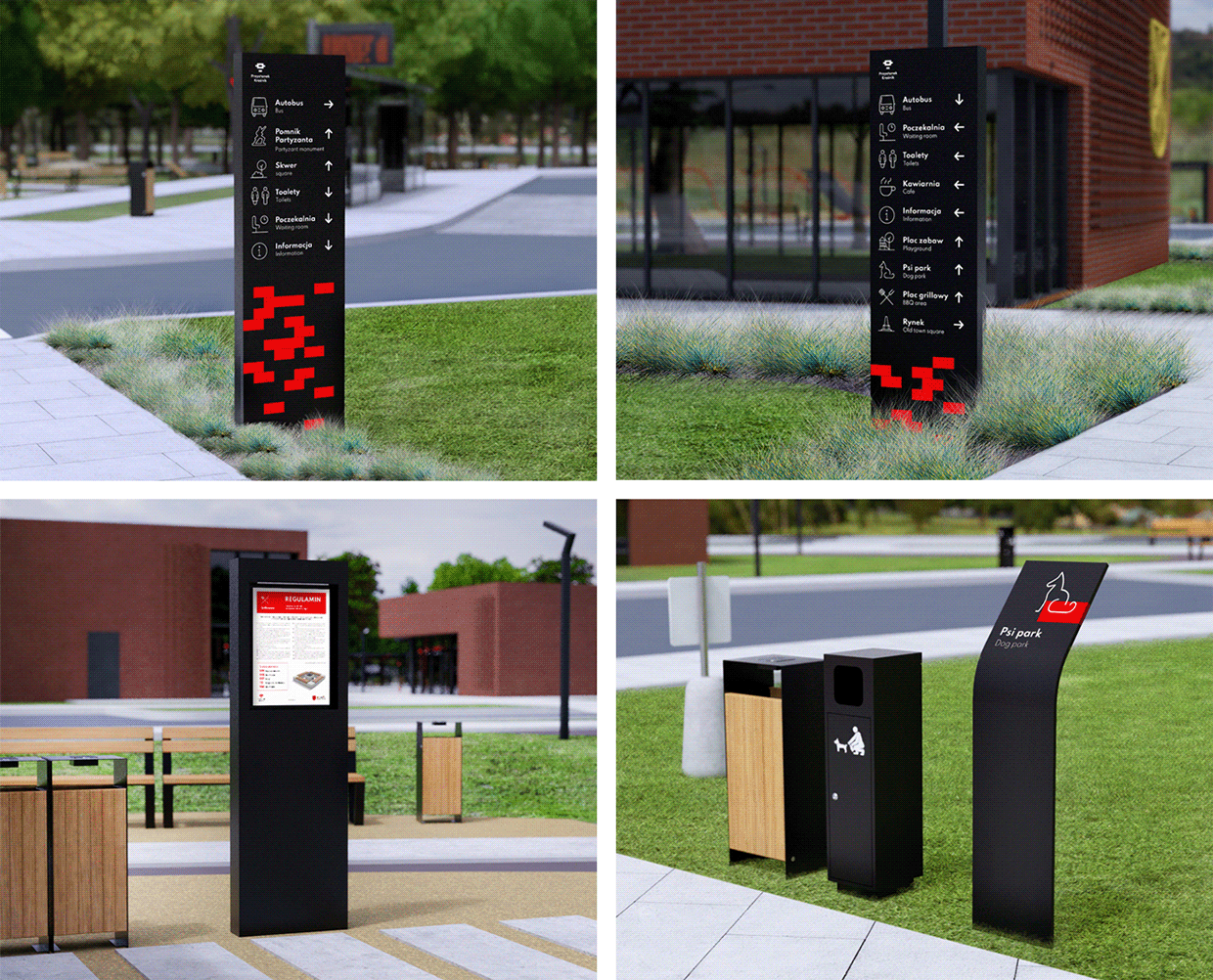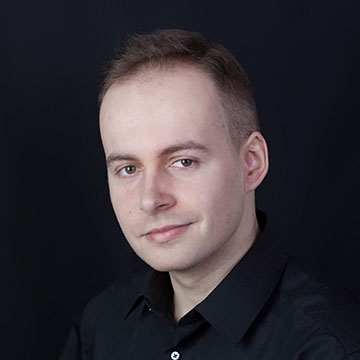


Architectural Concept, Visualization & Branding crafted for Przystanek Kraśnik - modern, multifunctional urban space.
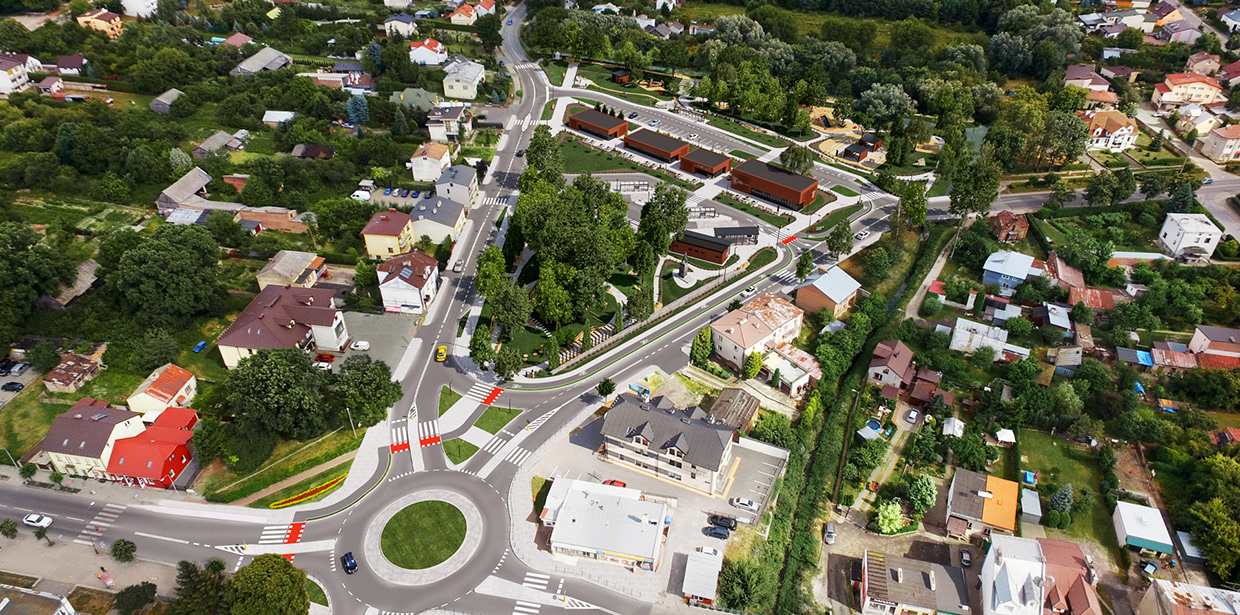
Currently, Kraśnik is a city that requires immediate revitalization measures, especially within its old part. The Local Revitalization Program envisages a number of activities to improve the aesthetics of the historic part of the city, increase the attractiveness for visitors, tourists and above all, residents. Project actions in the area covered by the study are to ensure the creation of an attractive space in every aspect for people of all ages, where social and cultural life as well as all other social and representative functions will be restored.
The aim of the "Przystanek Kraśnik" concept was to create a multifunctional, architecturally and urbanely coherent complex with the function of a green square with dominant recreation function, a center of public transport, giving a new expression to it in the city, a complex of buildings with a cultural and service function to meet the needs of residents of different ages. The space is supposed to be modern, friendly, aesthetic, and at the same time to become a showcase of the city, preserving as much as possible the historical premises related to this area. The applied architectural and urban planning solutions are to be associated with the industrial style, and therefore to refer to the industrial history of the city.
Visualizations and graphic design: Lemonade Studio
Conceptual design: Dendewicz Projekt
Master plan
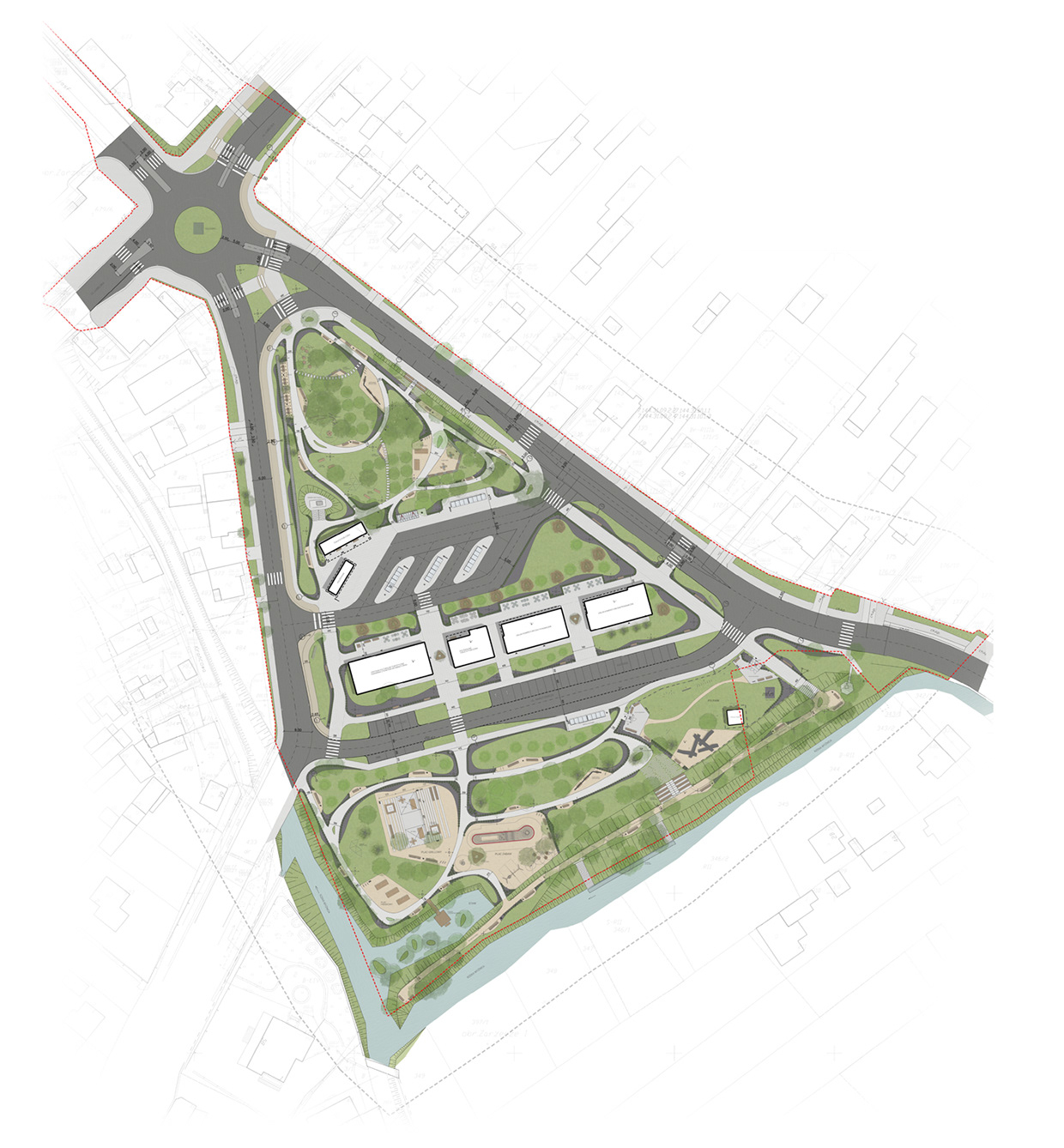
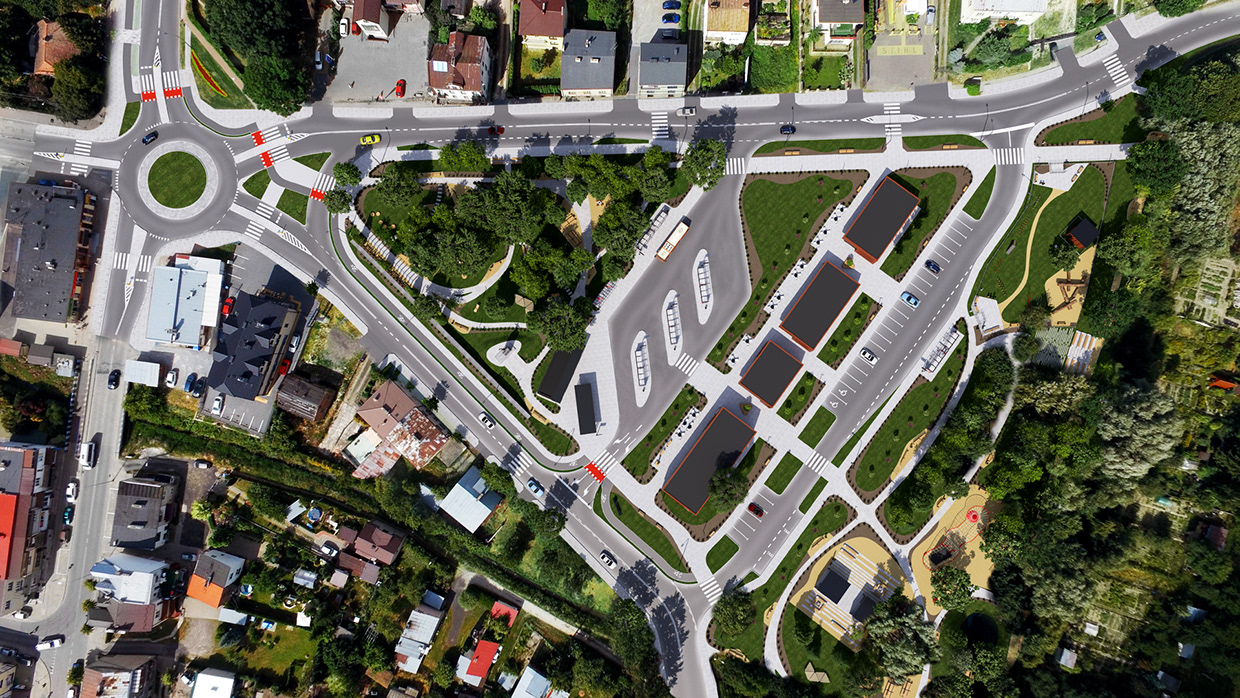
City square
The city square covers the area between Struga and Mostowa Streets, in the place of the historic city park. The designed area is a response to the residents requests to minimize the felling of the existing tree stand, as well as to increase demand for greenery and recreation areas, improving the image of the city in its historical district.
Aesthetic and at the same time functional and diversified, in terms of needs, urban design is supposed to have a showpiece character of a typical city square, intended for community meetings, resting places for various social groups, and at the same time it should be visually attractive for visitors and potential tourists.
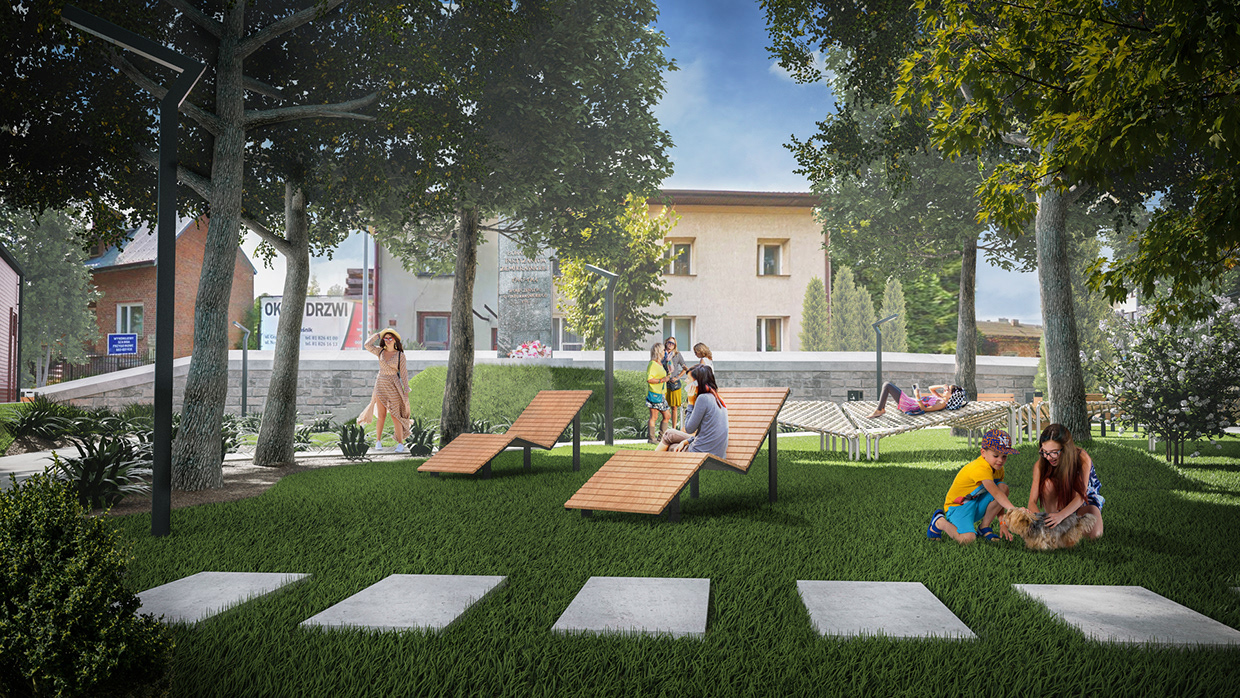
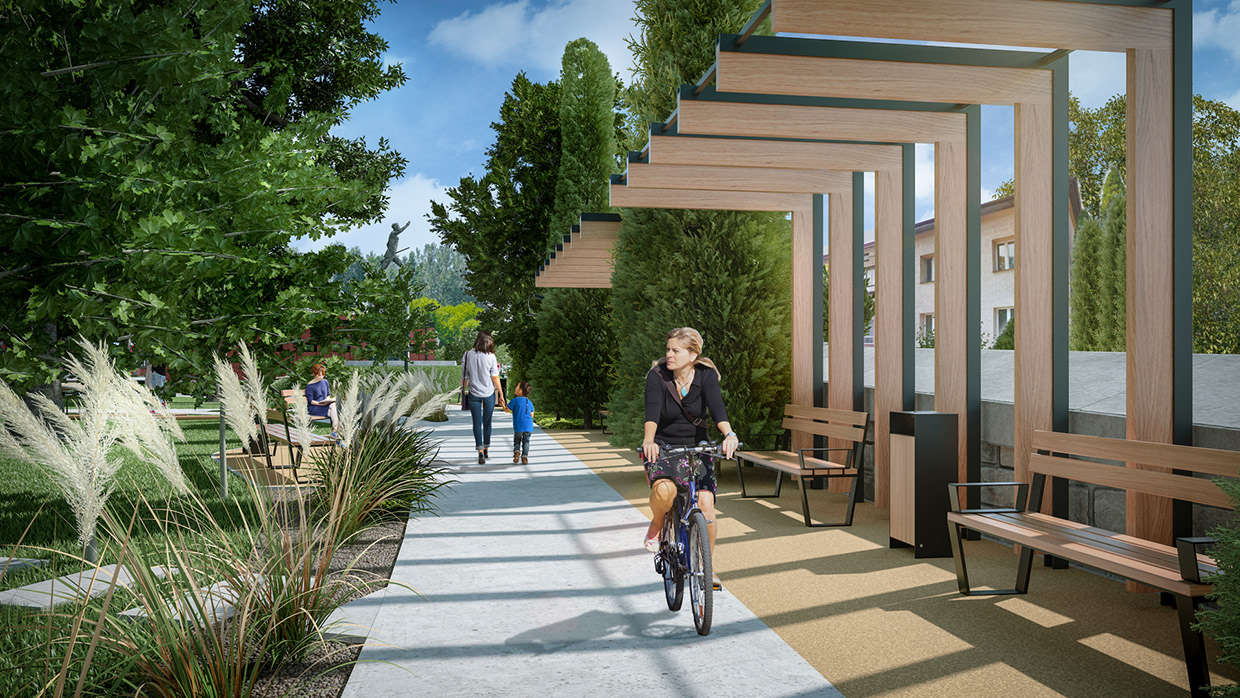
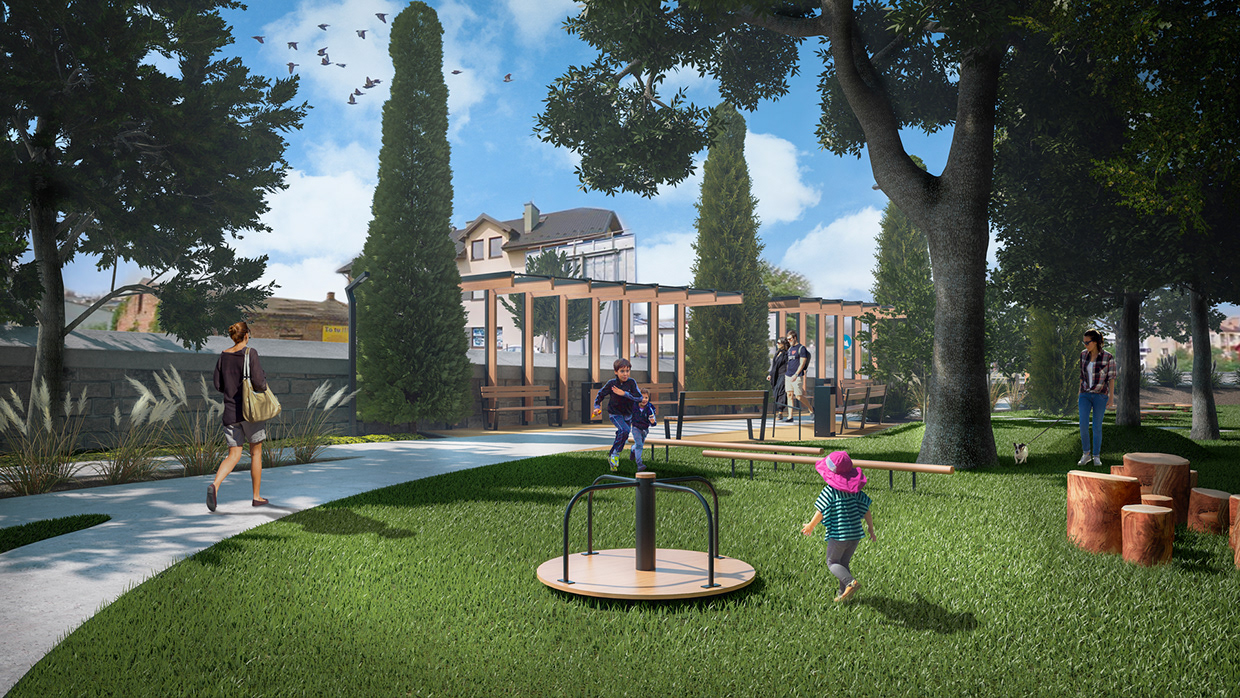
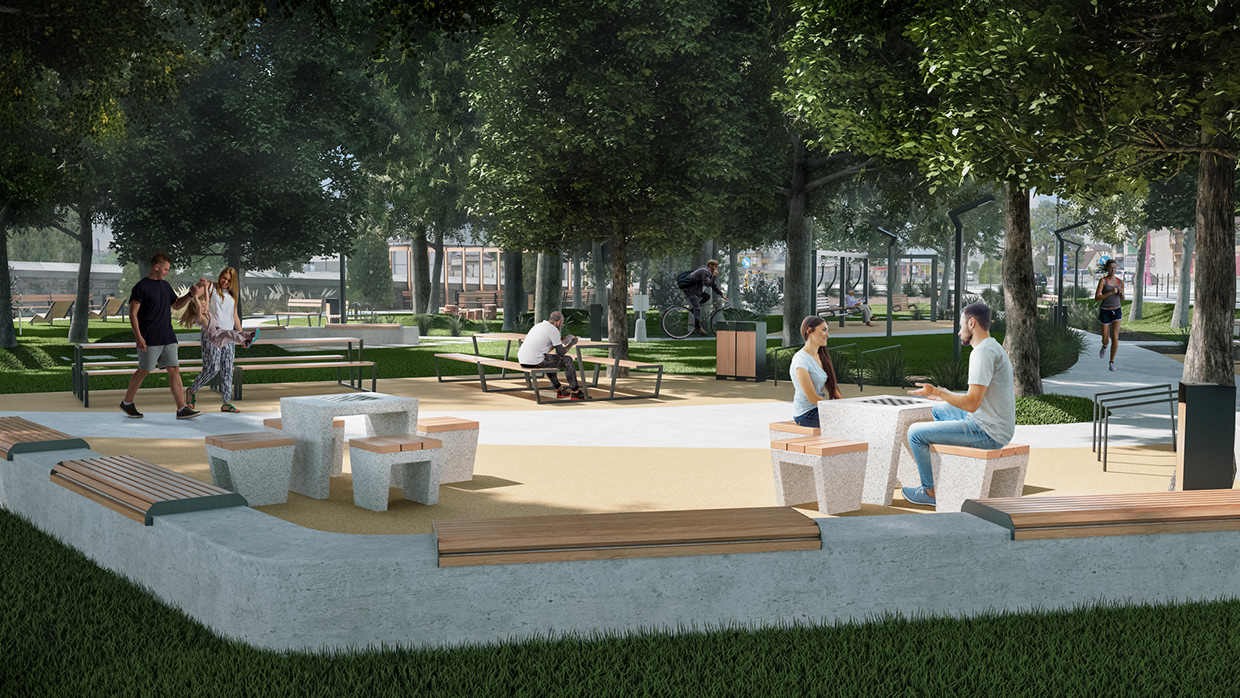
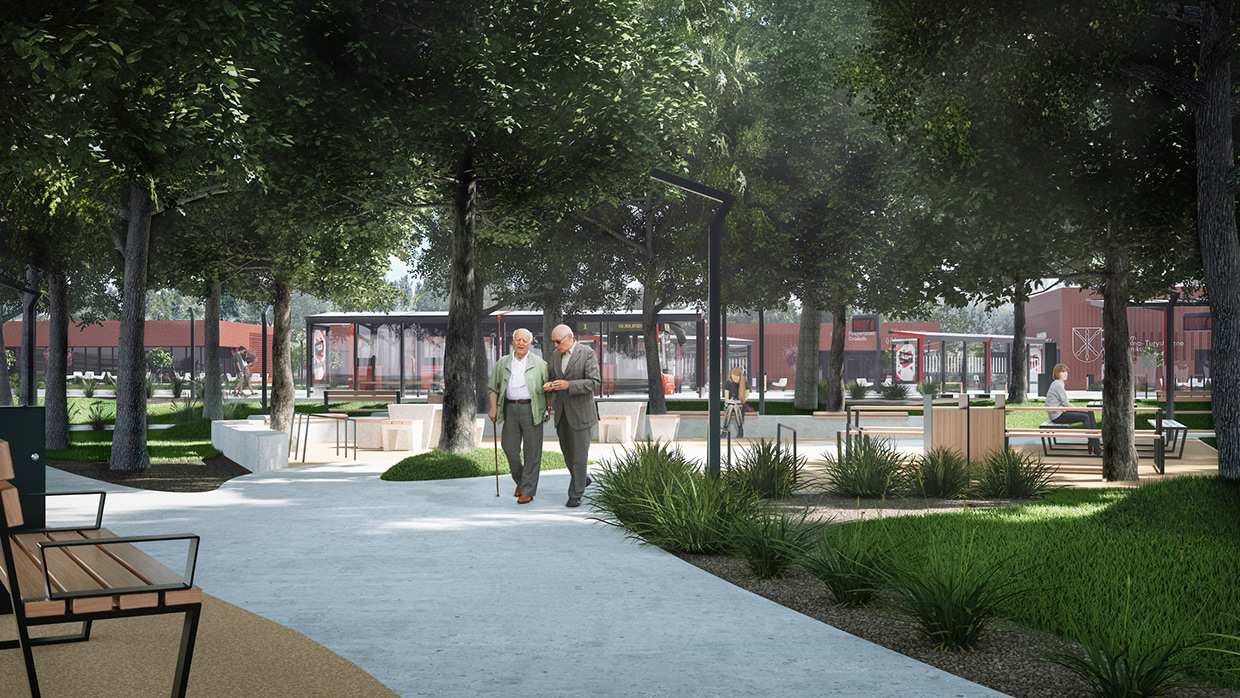
Interchange center
The Interchange Center was designed as a one-way communication system with bays, connecting Struga Street with Mostowa Street. The Center provides long-distance, local and bicycle transport services.
The center carries out:
- public toilet located in the north-western part of the area, including restrooms for women, men and disabled, as well as a drinking water and infomant,
- the waiting room in the form of a closed, glass shed, with a timetable, monitoring and dynamic passenger information, located on the west side,
- covered bicycle parking in the form of a bicycle shelter system with stands in the northern part,
- self-service bicycle repair station,
- bus shelters system with monitoring and dynamic passenger information system with lighting.
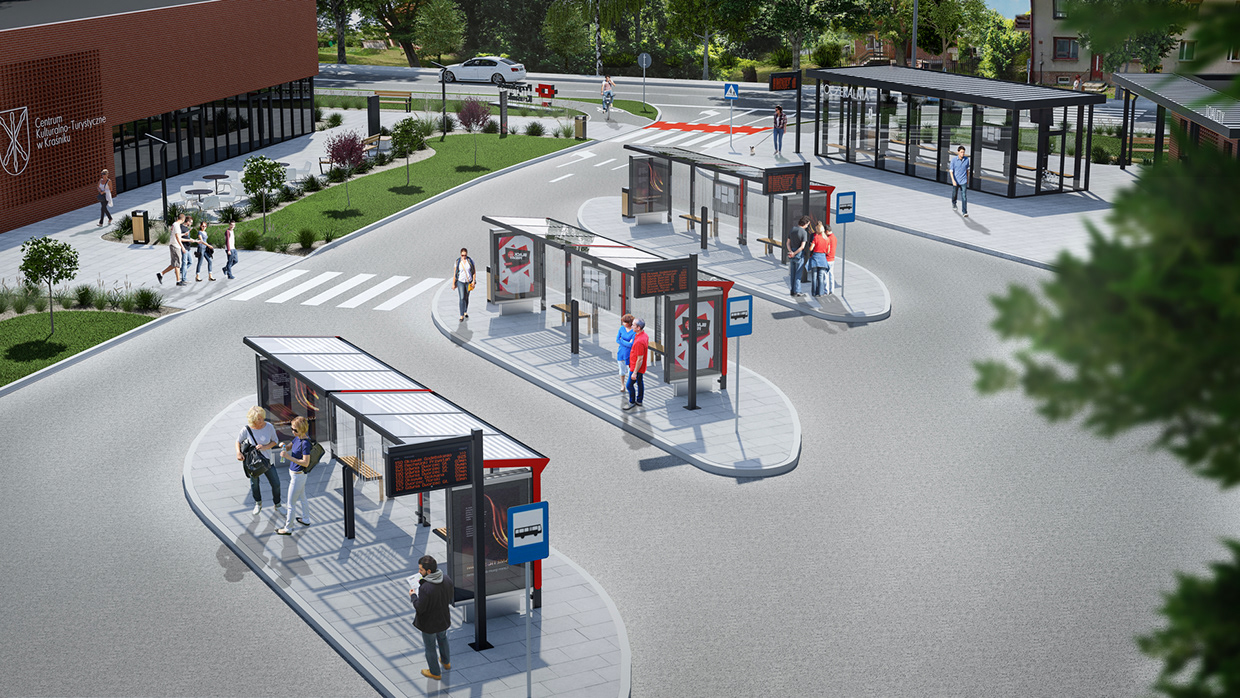
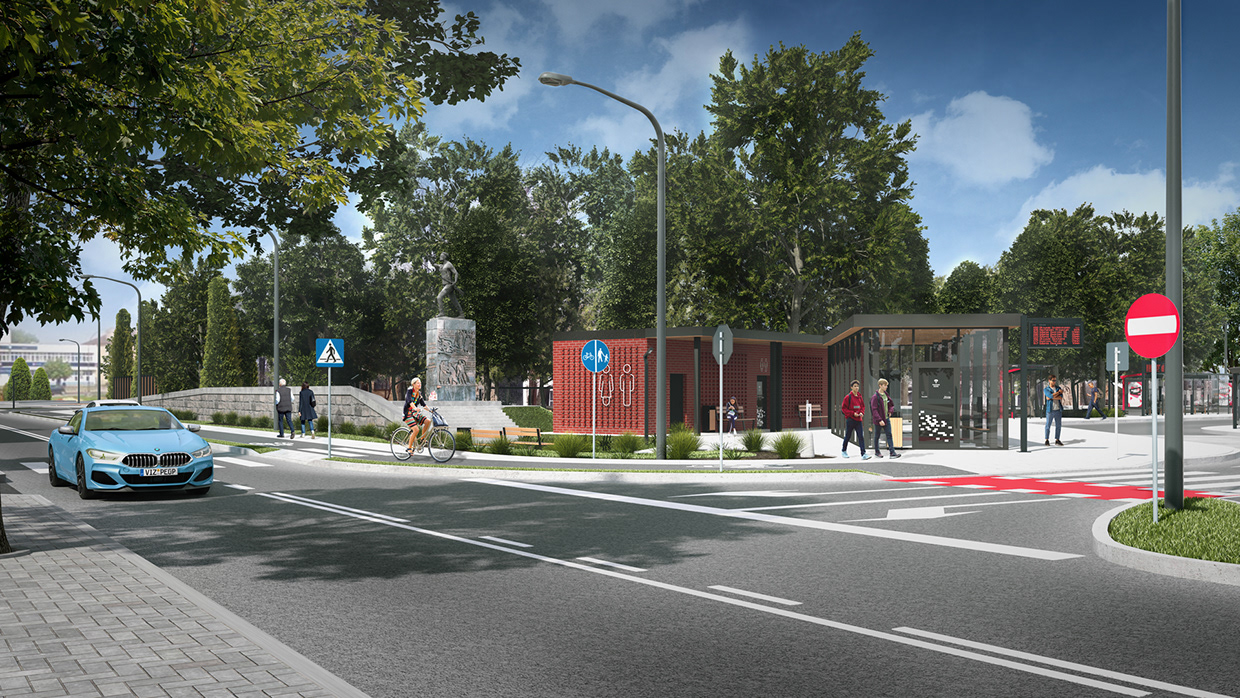
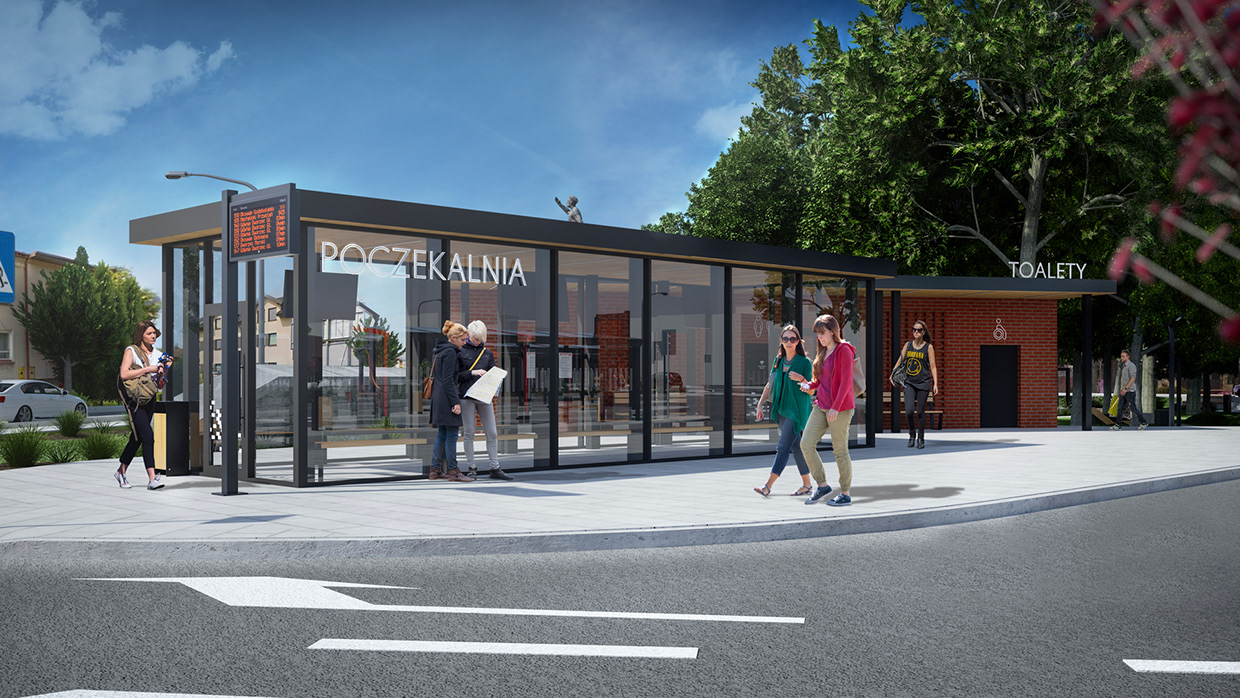
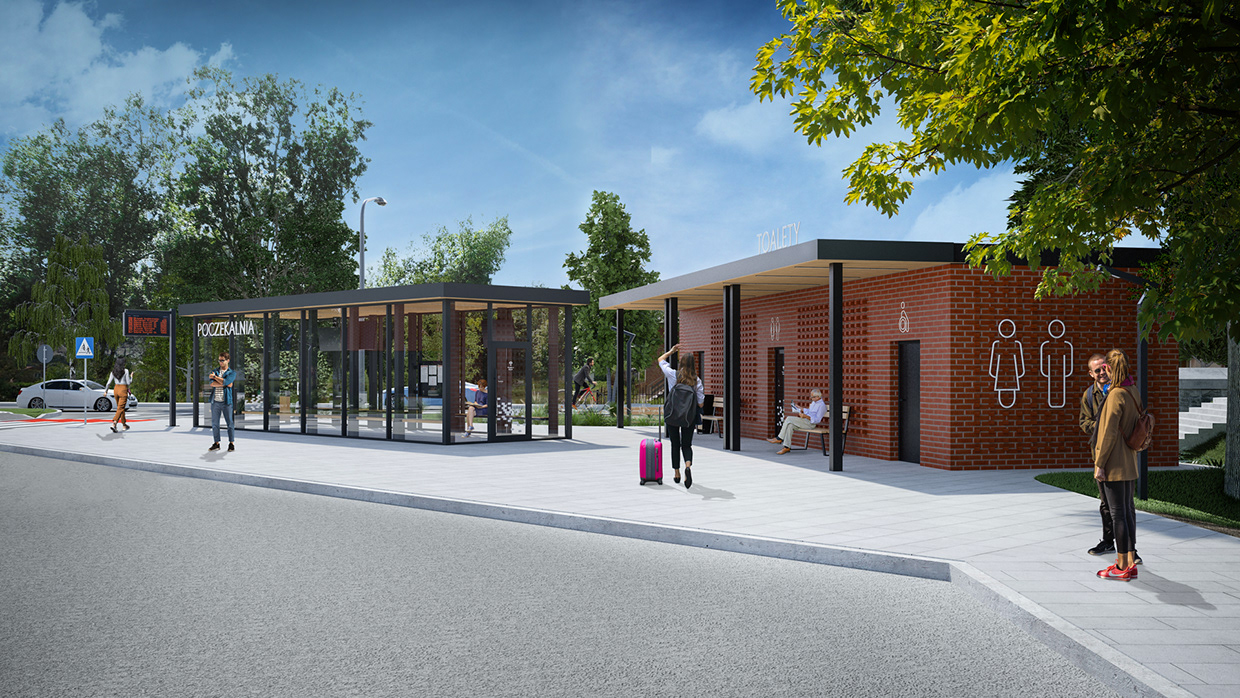
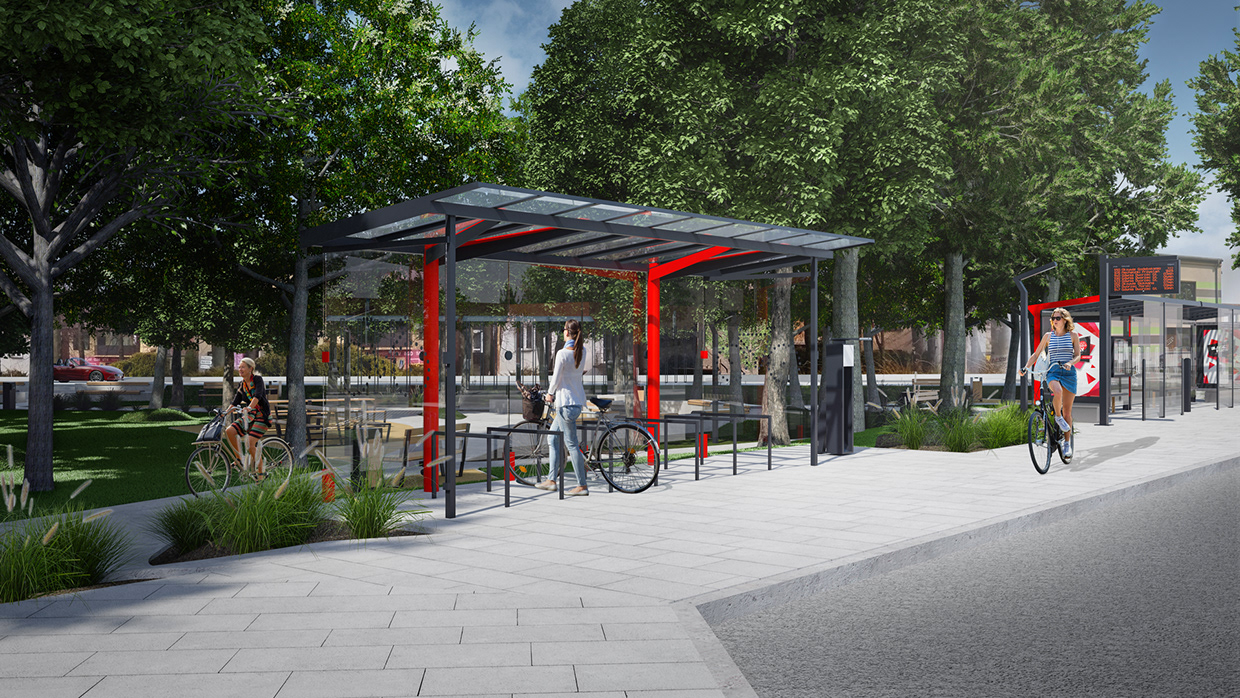
Service passage
A complex of four buildings with different functions was created in parallel to Narutowicza street. It is the building of the Cultural and Tourist Center, the station building, complementing the functions of the buildings at the interchange center and two buildings intended for services, mainly catering. One of the buildings is taller than the others, becoming the dominant in the replacement of the existing Pola Cinema. The buildings have the form of cuboids with facade made of demolition brick.
To break the simple shape, numerous glazing were used, adding lightness to the blocks and designing elements out of the brick facade arranged in the form of openwork and three-dimensional patterns. Focusing on minimalism in the selection of materials (i.e. brick, glass, steel, concrete and wood), gives the buildings an effective, modern simplicity, and at the same time an industrial spirit, which is inseparably associated with Kraśnik.
Along the northern frontage, a pedestrian and cyclist promenade was designed, creating an elegant and friendly public space, corresponding to the buildings and their functions.
The construction of a building complex with a varied and at the same time highly specified function will allow to create new possible ways of spending time in this place, meeting the needs of residents, increasing the comfort of traveling and safety of users.
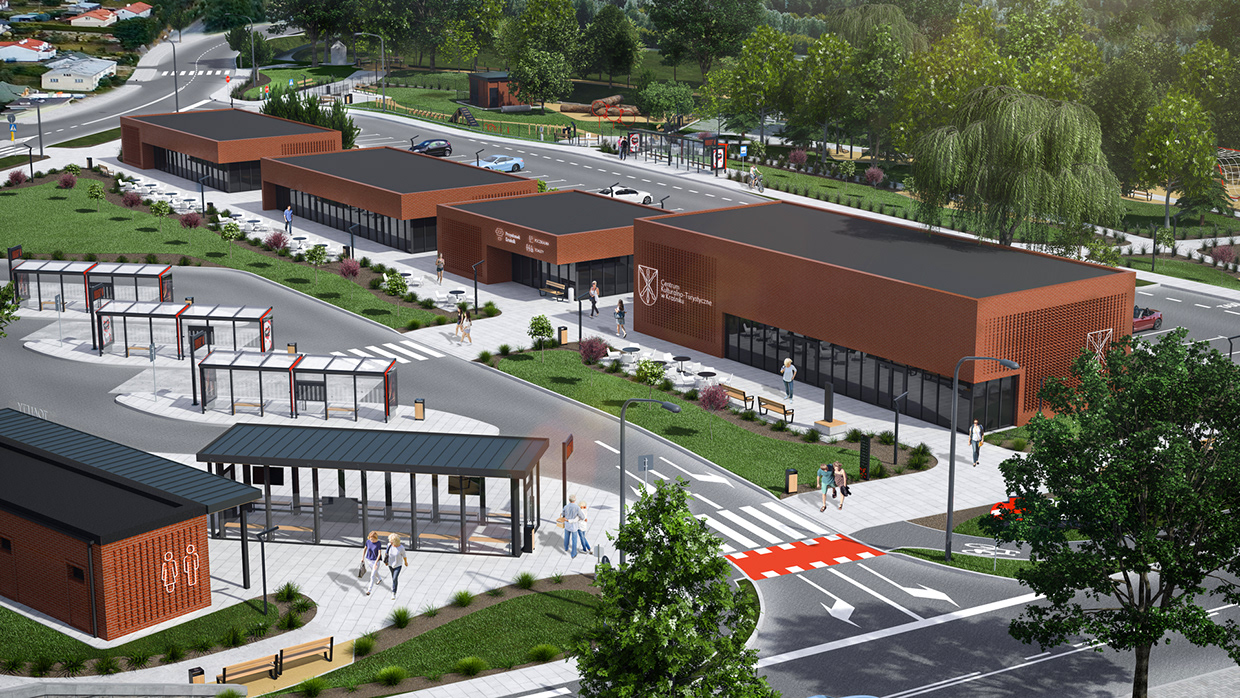
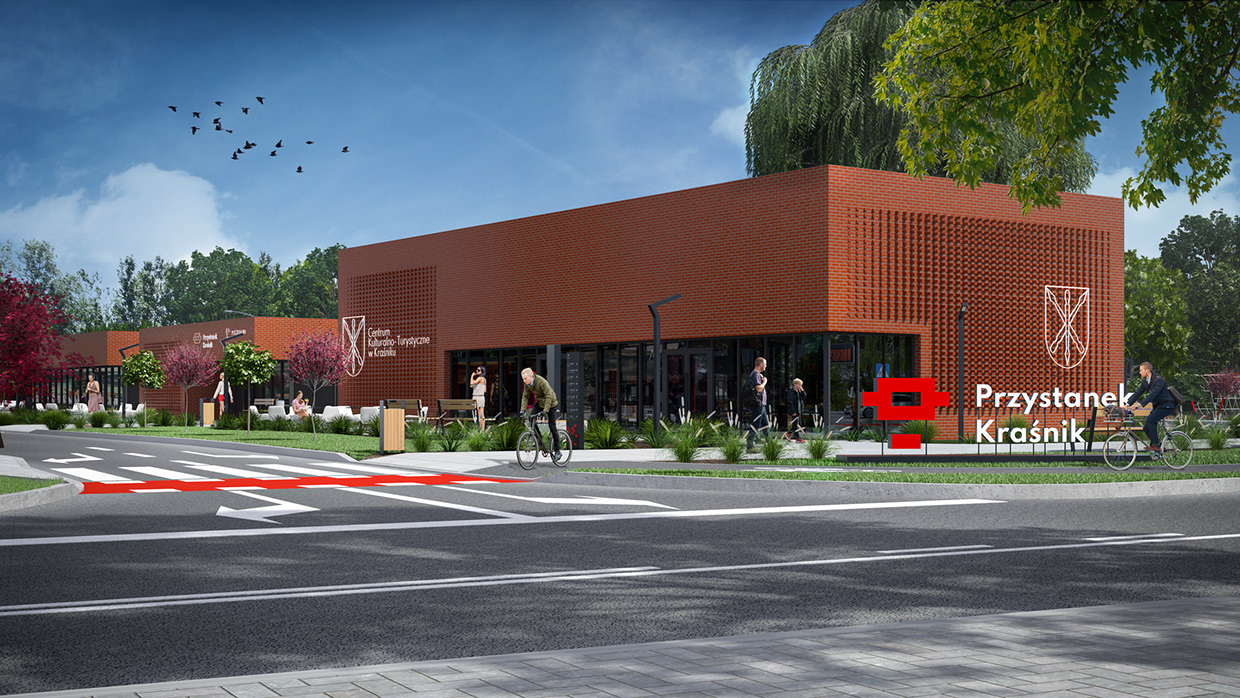
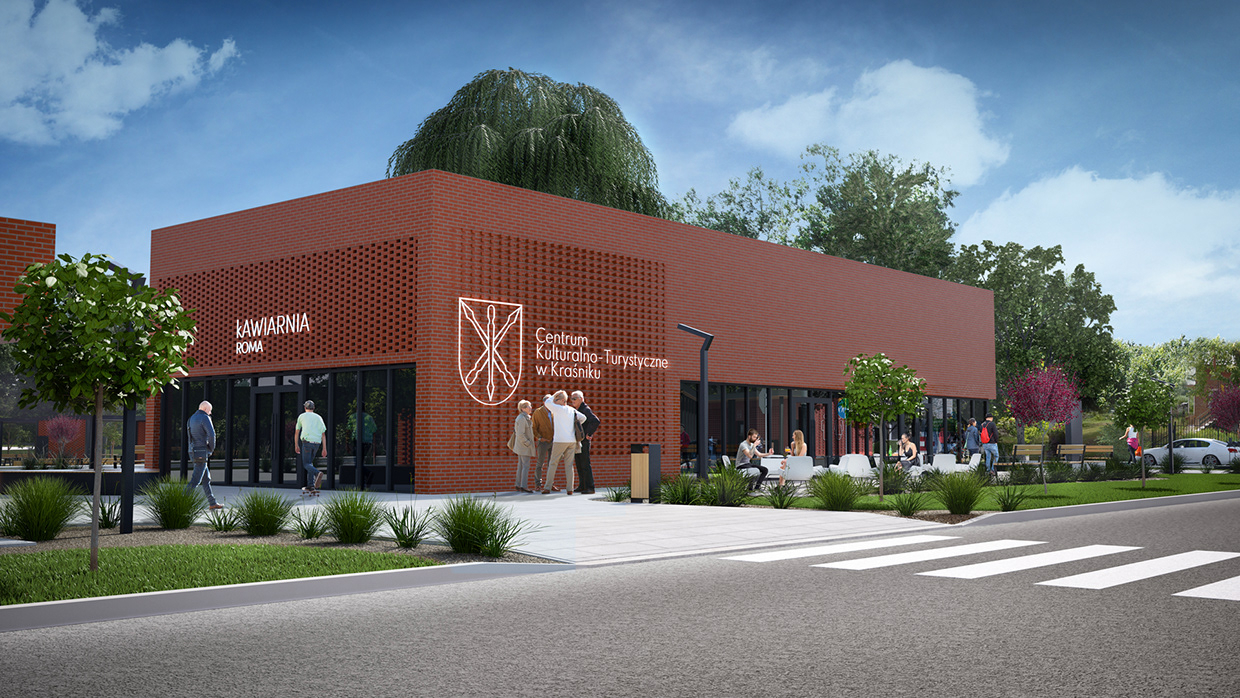
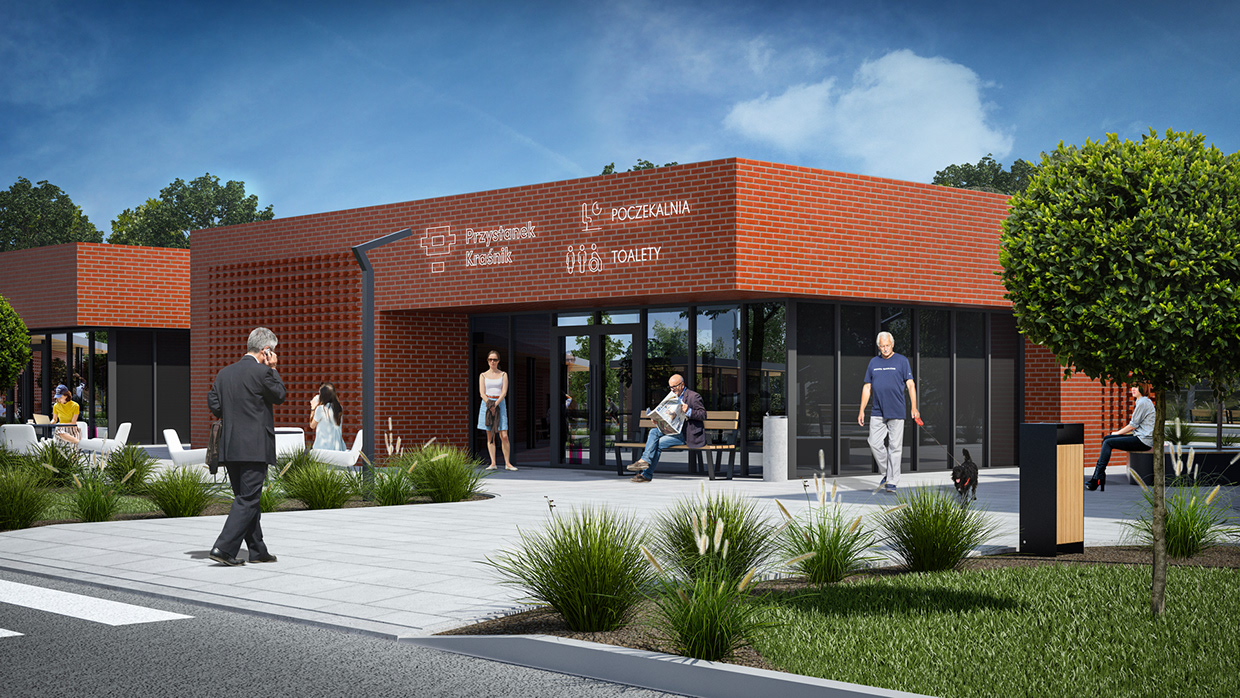
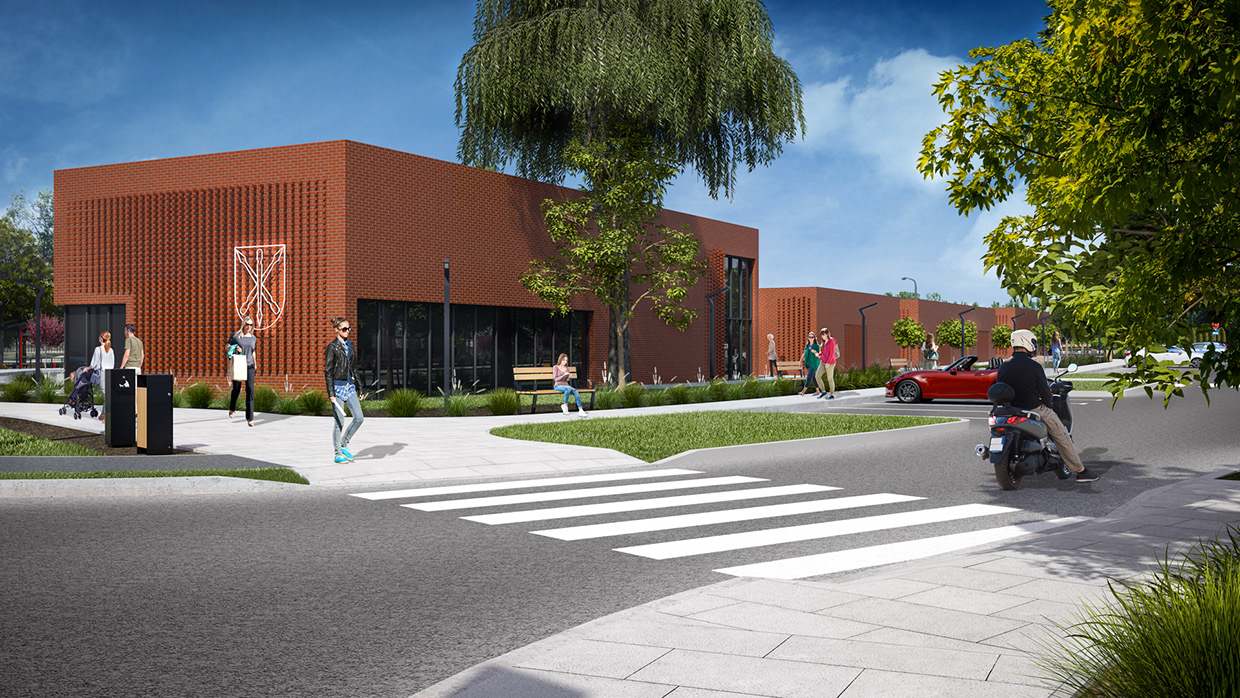
Boulevards on the Dyke
The designed area has a typical recreational and walking character. In the western part there is a picnic area with tables, a barbecue area with gazebos and barbecue areas. In the place where a watermill probably existed, a pond was created with a pier with a mill wheel. Moreover the "Avenue on the Dyke" running along the river begins here. The footpath on the dyke is closed by a chapel.
In the southern part a playground for children has been designed, which characteristic element is a steel structure designed for climbing activities. Further on, there is an off-road staircase with seats, forming a small amphitheater. In the eastern part it is proposed to create a fenced dog run with a varied functional program for four-legged pets.
The urban layout of the entire project was dictated by the existing tree stand. Thanks to this, the paths are organic, meandering freely among the trees and connecting individual functional zones. The whole area is complemented by flowerbeds with ornamental grasses and perennials sprinkled with dark gravel, which also create fancy, organic patterns.
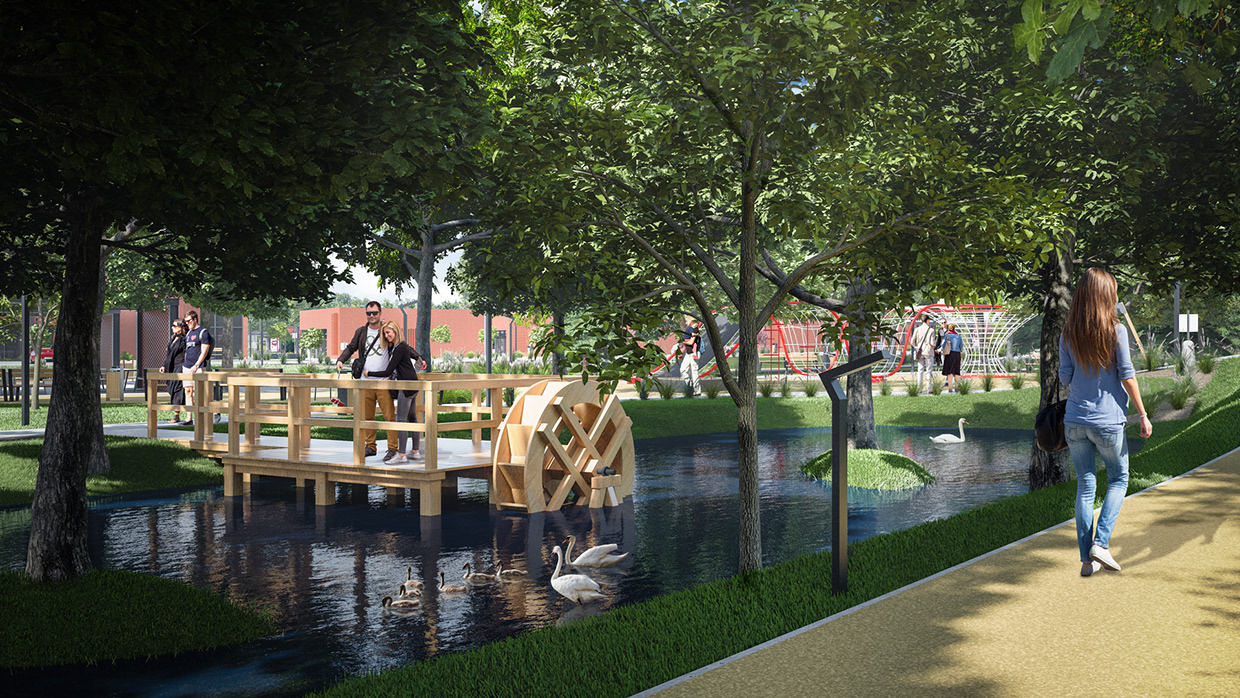
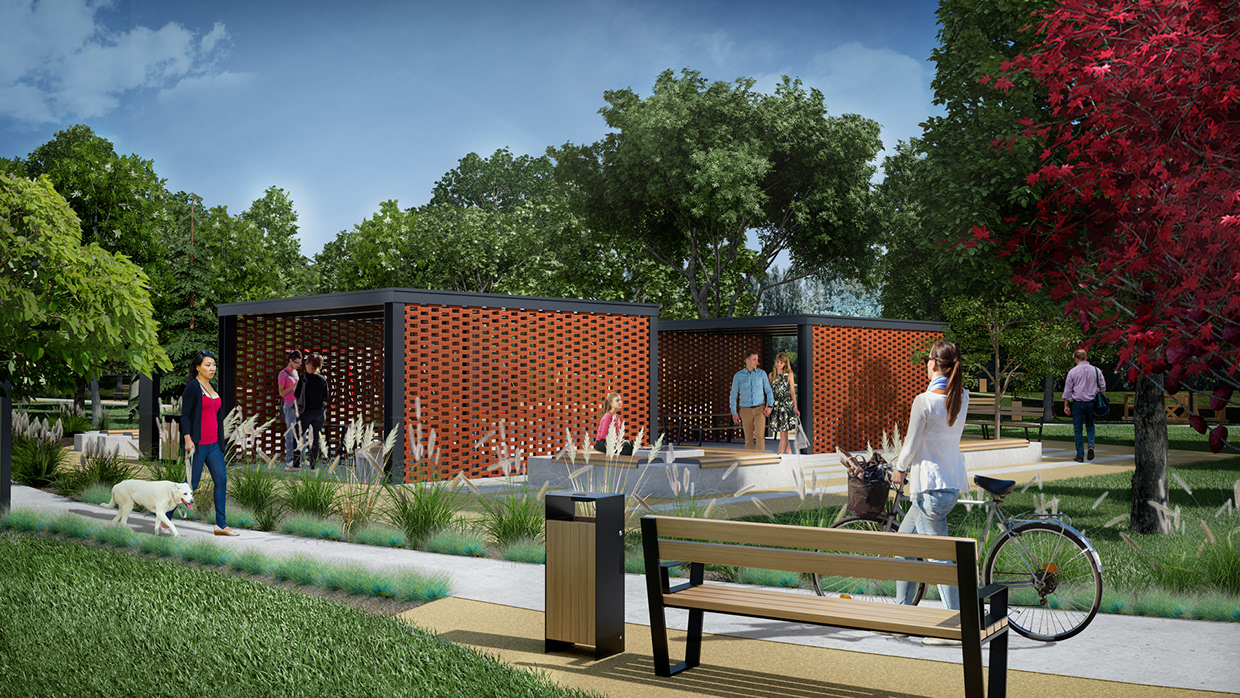
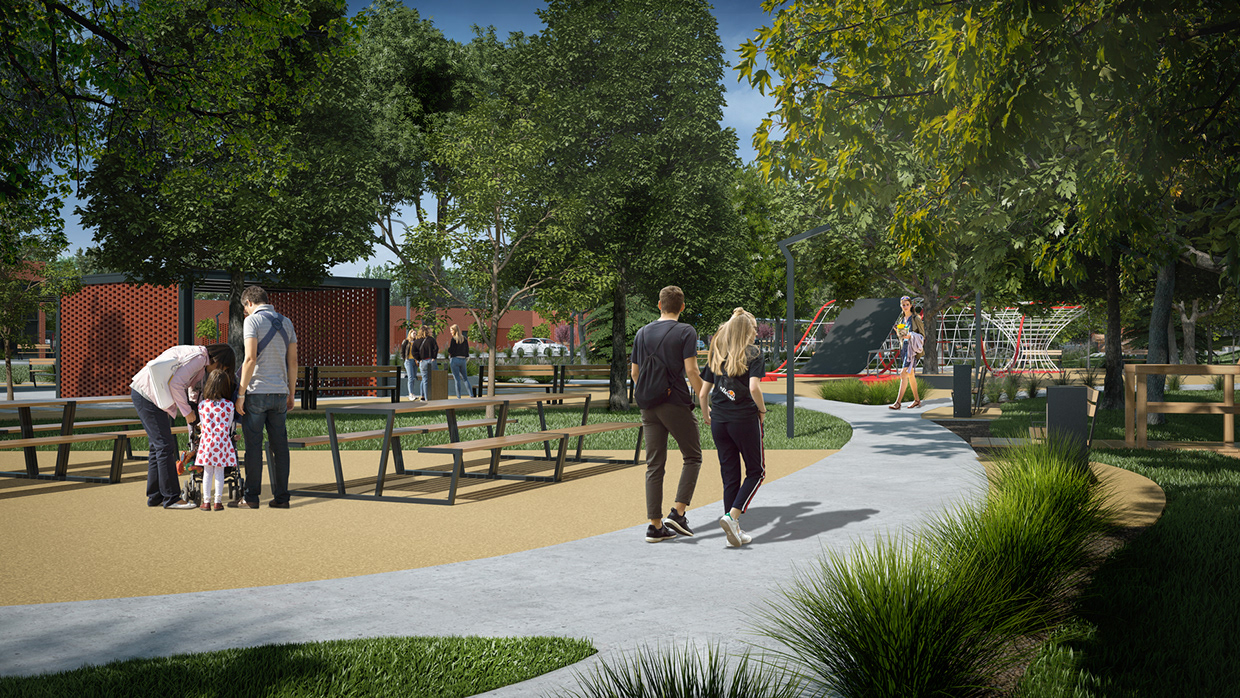
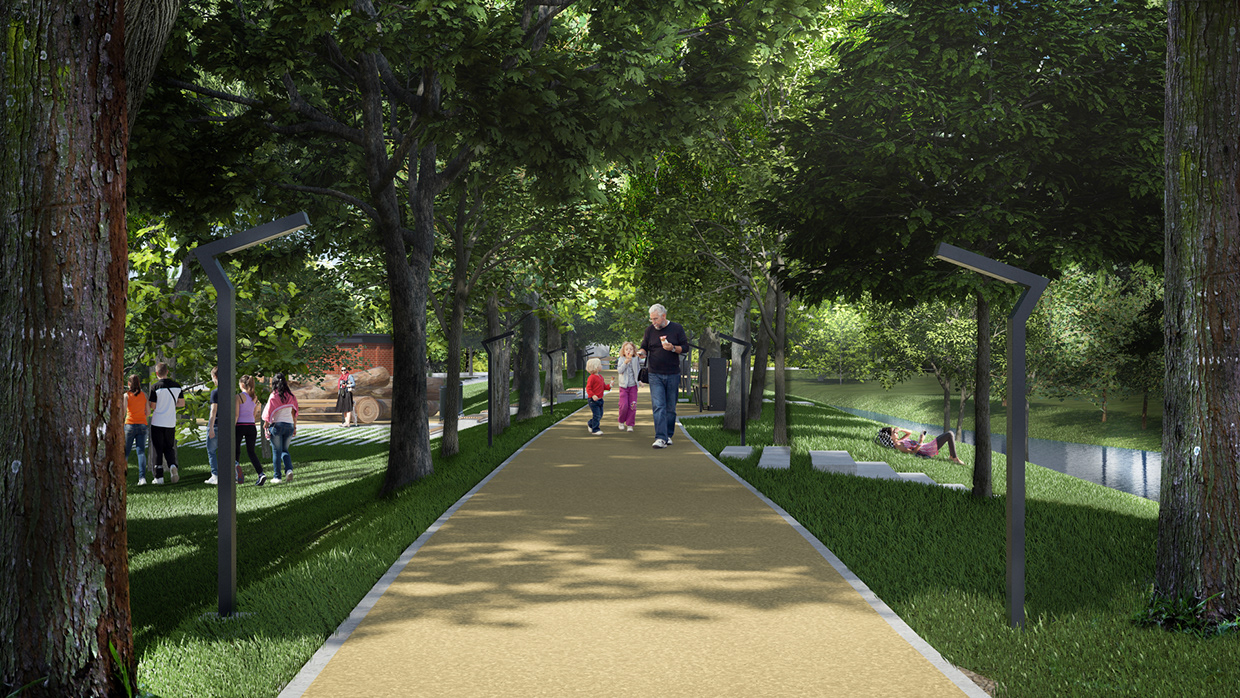
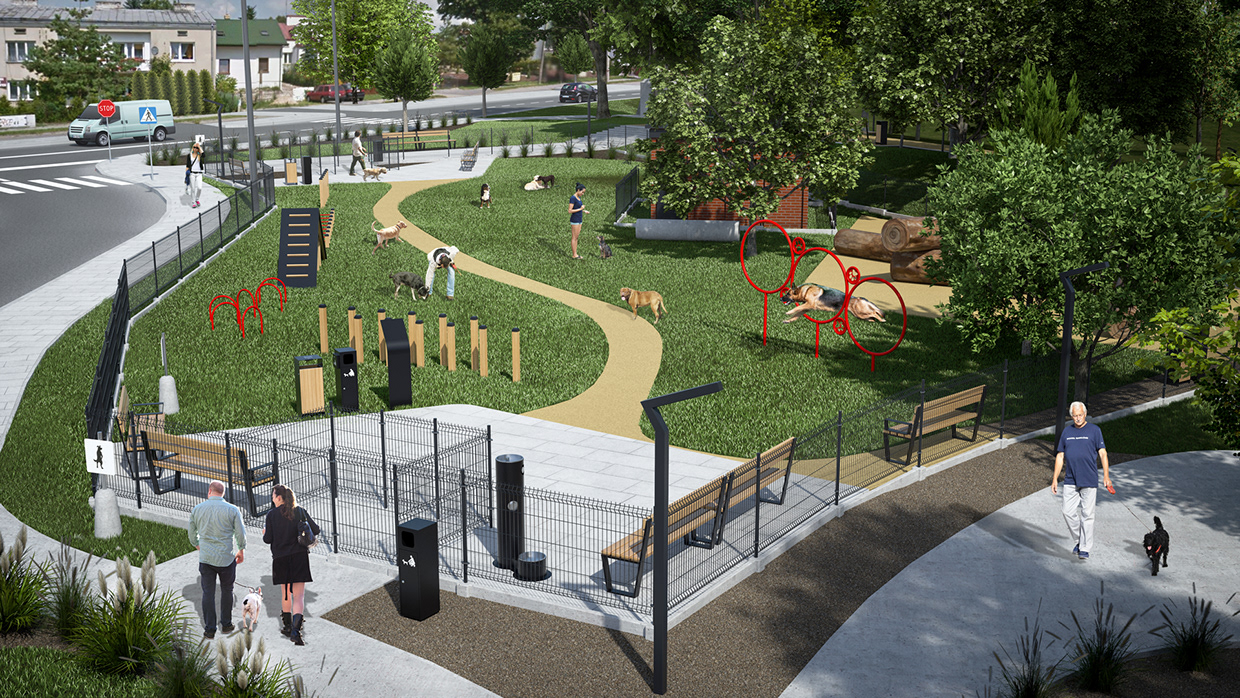
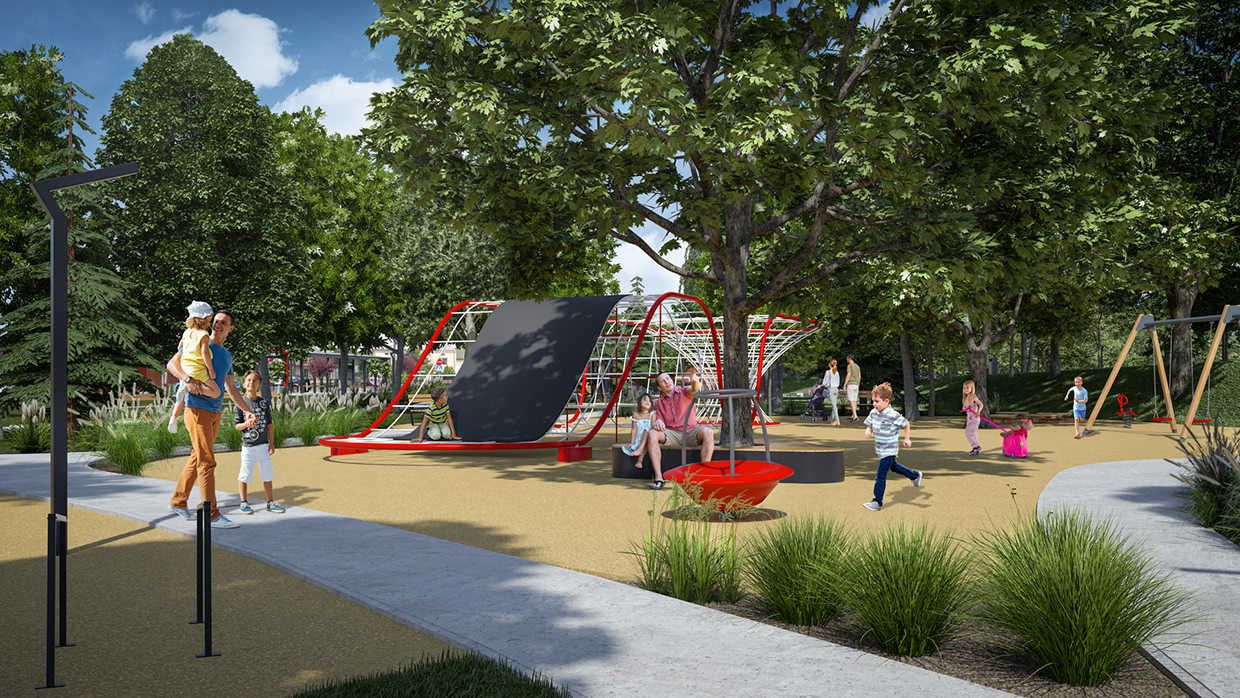
Visual indentification
According to the name, the task of the visual identification system of a place is to uniquely identify and distinguish it from other places. In this way the foundation of the space brand is built, giving it coherent character and utilizing the marketing potential.
That makes it easier to recognize a place in the public space, which influences its reception by residents, tourists and visitors, as well as integration of local community around the values defined in the system. Its role is therefore significant and the creation itself is purely practical.
The proposed logo, especially its signet, has minimalist character. The main component of the signet is a rectangle with a brick-shaped proportions, which refers to the history and tradition of the city. The shape of the signet refers to the marker on the map, which is in line with the proposal of calling the place "Przystanek Kraśnik".
It also allows for a broad, open interpretation through its unique and futuristic shape, evoking associations with, among others, robotics - a field of science that is dynamically developing in Kraśnik. The color scheme of the logo is associated with the city's coat of arms, which also found its place in the system along with iconography, information boards and signs.
